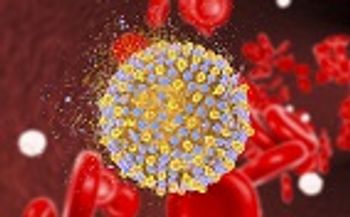
Despite the fact that an increasingly large portion of the hepatitis C (HCV)-infected population successfully achieves a cure for the infection, called sustained viral response (SVR), this population still deals with increased mortality rates.

Despite the fact that an increasingly large portion of the hepatitis C (HCV)-infected population successfully achieves a cure for the infection, called sustained viral response (SVR), this population still deals with increased mortality rates.

A new coalition created by the Bill & Melinda Gates Foundation and other global partners will launch at this year’s World Economic Forum, with the goal of supporting the fast-tracked development of new vaccines.

Researchers from the National Institutes of Health recommend integrating men into the family-planning process in the age of Zika.

A new study has revealed more information on how microbes confer resistance to antibiotics.

A new study takes a look at the efficacy of off-label treatments for Clostridium difficile (C. difficile) infection.

Harvoni has been added to Express Script’s formulary and will be available from the company’s Hepatitis Cure Value Program.

Low CD4/CDE8 ratio and a history of bacterial pneumonia heighten the risk for lung cancer in an HIV-positive population.


This year’s most-viewed article on ContagionLive combined two hot-button issues: social media and vaccination.

GlaxoSmithKline recently announced positive results from two recent trials of new antiretroviral drug regimens, showing HIV can be effectively treated with fewer medications.

A new study from University of Copenhagen researchers explains how some multidrug-resistant bacteria are able to survive lethal doses of antibiotics through a hibernation-like defense mechanism.

Researchers use protein misfolding cyclic amplification to screen blood samples for abnormal prions that would indicate Creutzfeldt-Jakob disease (CJD).

Experts suggest government efforts are sorely needed to provide education about HIV/AIDS to at-risk groups, especially among the young gay population.

Researchers from the University of Würzburg in Germany discuss the use of marine natural products to fight drug-resistant pathogens.

Researchers from Australia may have found the key to the spread of antimicrobial-resistant gonorrhea in men who have sex with men (MSM).

A review of the top two video interviews from 2016 is included here.

In Arizona and California, where coccidioidomycosis, or Valley fever, is most prevalent, researchers are putting new federal funding to use to study these fungal infections.

Researchers from Erasmus disease the key factors needed for successful human-to-human contact-transmission of zoonotic pathogens.

Johns Hopkins University School of Medicine researchers have found that genetic mutations of the NOD1 protein can result in increased risk of cytomegalovirus (CMV).

We’ve put together the top five biggest news stories on HIV Contagion covered this year. Did you read them all?

With an increase in attention on arthropod-borne diseases this year, scientists from Erasmus discuss the key factors involved in human-to-human transmission of these pathogens.

Despite the largest mumps outbreak in the United States in a decade, health officials note that the outbreak would have been larger and more severe without high vaccination rates.

Contagion’s Top Five Zika-related news stories over the past year are included in this article.

The 90-90-90 goal from the Joint UN Programme on HIV/AIDS has three prongs: By 2020, 90% of people with HIV worldwide will be aware of their status; 90% of HIV+ people will have access to treatment; and 90% of those with HIV will have a suppressed viral load. Money and training are key.

Researchers have found that current methods of predicting risk of heart attack or stroke in HIV-positive individuals are lacking.

On December 14, the Centers for Disease Control and Prevention (CDC) issued a Zika-related travel and testing guidance for Brownsville, Texas and the surrounding area after local officials confirmed 5 cases of the virus linked to local mosquitoes.

With an increasing number of Salmonella infections showing resistance to antibiotics, a CDC team set out to determine which strains are most problematic.

Researchers shed light on how oxylipins play a key role in forming the biofilm shield that helps protect disease-causing bacteria against antibiotics.

We’ve put together the top five biggest news stories regarding food-borne illnesses this year. Did you see them all?

A new study reveals evidence that a longer course of antibiotics is more effective for treating ear infections in young children.